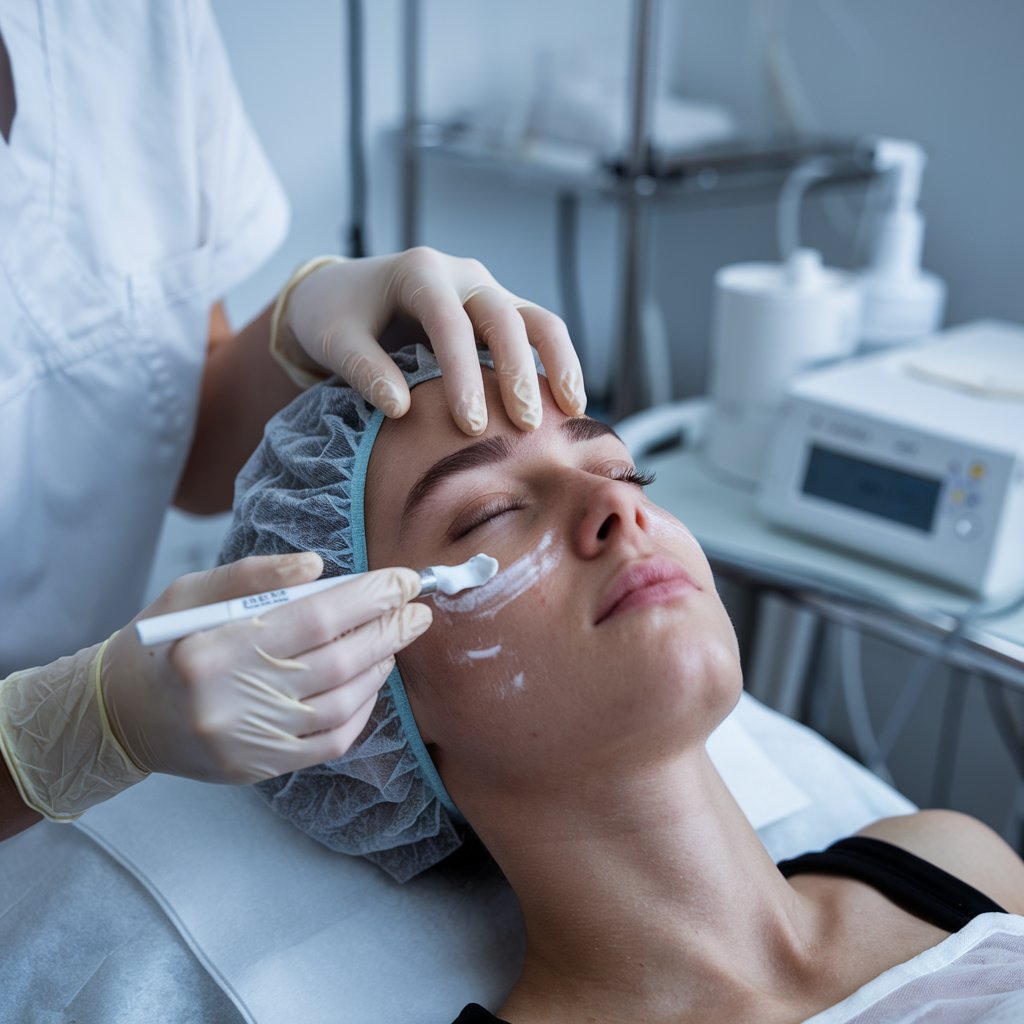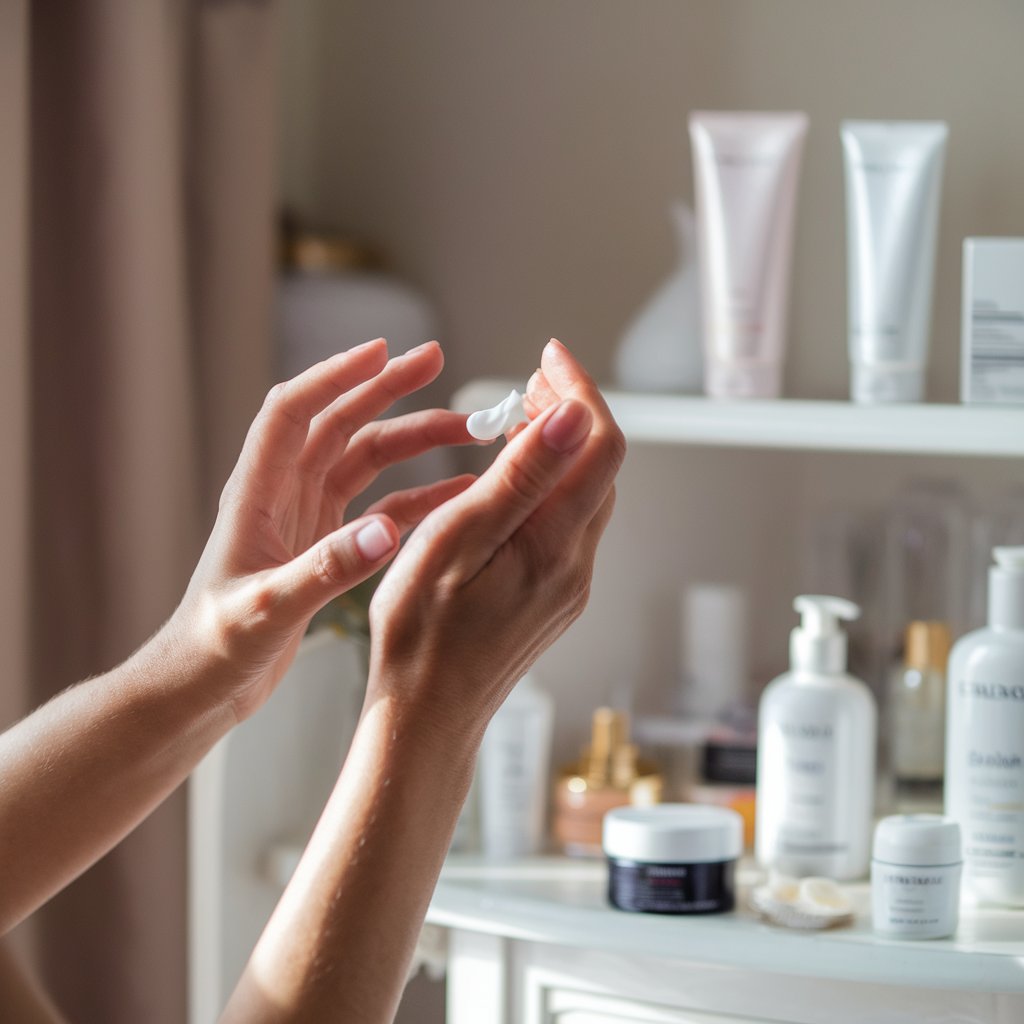What Are Actives in Skin Care? A Comprehensive Guide to Understanding Active Ingredients
Actives in skin care refer to powerful Active Ingredients in Skincare that target specific concerns. Learn about 9 Common Active Ingredients in Skin Care.
When it comes to skincare, understanding the role of active ingredients can be the key to transforming your skin. “Actives in skin care” refers to those ingredients that have been scientifically proven to address specific skin concerns, ranging from wrinkles and acne to dullness and pigmentation issues. But how exactly do these ingredients work, and why are they essential in any skincare routine?
What Are Actives in Skin Care?
The term “actives” in skin care refers to powerful, biologically active ingredients that work to change or improve the condition of your skin. Unlike base ingredients or fillers, which make up most of a product’s formula, actives are the ‘workhorses’ that deliver noticeable results. They can regulate oil production, boost collagen, smooth out wrinkles, and even out skin tone, depending on their specific function.

The Science Behind Active Ingredients
Active ingredients in skincare penetrate deeper layers of the skin to enact change at a cellular level. These compounds are chosen based on their ability to interact with skin cells, either to stimulate processes like collagen production or to break down unwanted substances like dead skin cells and excess oil. For example, retinoids, one of the most potent active ingredients, work by speeding up cell turnover, which can help diminish wrinkles and fine lines.
Why Do Ingredients in Actives in Skin Care Matter?
Skincare products are full of different ingredients, but not all are created equal. Actives matter because they offer targeted solutions to specific skin concerns. For instance, if you have acne-prone skin, a product that contains an active like salicylic acid will be far more effective than a general moisturizer. This is because salicylic acid is proven to clear clogged pores and prevent breakouts.
Benefits of Actives in Skin Care Ingredients:
- Targeted Results: Each active ingredient serves a purpose, whether it’s to hydrate, exfoliate, protect, or repair the skin.
- Long-Term Skin Health: Actives don’t just offer quick fixes; over time, they help improve the skin’s structure and function.
- Clinically Tested: Most active ingredients in skincare, such as retinoid or niacin amide, are backed by scientific research and have been shown to be safe and effective.
9 Common Ingredients in Actives in Skin Care Explained
Let’s break down each of the 9 most common ingredients in actives in skin care, exploring why they’re so effective and what types of skin conditions they’re best suited for.
1. Retinoid (Vitamin A Derivatives)
Retinoids, including retinol, are hailed as one of the most effective anti-aging ingredients. They work by increasing cell turnover, which helps to reduce the appearance of fine lines, wrinkles, and sun damage over time. Retinoids can also improve skin texture and help fade hyperpigmentation.
- Best For: Aging skin, acne, hyperpigmentation
- How to Use: Retinoids can cause sensitivity, so it’s best to start slowly using them 2-3 times a week at night and always pair with sunscreen.
2. Vitamin C (Ascorbic Acid)
A powerful antioxidant, Vitamin C helps brighten the skin, reduce dark spots, and fight free radical damage from environmental pollutants and UV rays. Regular use of Vitamin C can also enhance your skin’s natural glow and even out skin tone.
- Best For: Hyperpigmentation, dullness, fine lines
- How to Use: Apply Vitamin C serum in the morning before moisturizer and sunscreen for the best protective benefits.
3. Salicylic Acid (Beta Hydroxyl Acid – BHA)
Salicylic acid is oil-soluble, making it perfect for acne-prone skin. It penetrates deeply into the pores to dissolve sebum and exfoliate dead skin cells, preventing clogged pores and reducing breakouts.
- Best For: Oily, acne-prone skin
- How to Use: Use a salicylic acid-based toner or spot treatment after cleansing, focusing on problem areas.
4. Hyaluronic Acid
Hyaluronic acid is a hydrating powerhouse. Naturally found in the skin, it binds to water molecules, helping to keep the skin hydrated, plump, and healthy-looking. It’s a fantastic ingredient for all skin types, especially dry and dehydrated skin.
- Best For: Dry, dehydrated skin
- How to Use: Apply hyaluronic acid after cleansing and before your moisturizer to lock in hydration.
5. Niacin amide (Vitamin B3)
Niacin amide is known for its ability to reduce redness, inflammation, and pore size. It also helps improve the skin’s barrier function, making it an excellent choice for sensitive or irritated skin.
- Best For: Redness, inflammation, uneven texture
- How to Use: Incorporate niacin amide in your routine after cleansing but before applying your thicker serums or moisturizers.
6. Glycolic Acid (Alpha Hydroxyl Acid – AHA)
Glycolic acid is one of the most popular exfoliating agents. It helps remove dead skin cells, revealing a brighter, smoother complexion. Regular use of glycolic acid can improve texture, and tone, and reduce the appearance of fine lines.
- Best For: Dull skin, uneven texture, anti-aging
- How to Use: Apply glycolic acid 1-3 times per week at night, depending on your skin’s tolerance, and always follow up with sunscreen during the day.
7. Peptides
Peptides are short chains of amino acids that help build proteins in the skin, like collagen and elastin. They’re excellent for improving skin firmness, and elasticity, and reducing the appearance of fine lines and wrinkles.
- Best For: Aging skin, loss of firmness
- How to Use: Apply peptide serums or creams after cleansing and toning, focusing on areas prone to wrinkles.
8. Benzoyl Peroxide
Benzoyl peroxide is a potent acne-fighting ingredient that kills bacteria responsible for acne. It’s commonly found in cleansers and spot treatments and is very effective for reducing breakouts.
- Best For: Acne-prone skin
- How to Use: Apply a thin layer of benzoyl peroxide to affected areas 1-2 times a day, but be cautious as it can dry out the skin.
9. Ceramides
Ceramides are essential lipids naturally found in the skin barrier. They help maintain hydration and protect the skin from environmental damage. Using products with ceramides helps restore the skin’s barrier function, especially for those with dry or sensitive skin.
- Best For: Dry, sensitive, eczema-prone skin
- How to Use: Use ceramide-rich moisturizers to lock in moisture and strengthen the skin’s natural barrier.

How to Safely Use Actives in Skin Care In Your Routine
One of the most important things to consider when using actives in skincare is their strength and compatibility with your skin type. Some actives in skin care, like retinoids and acids, can be irritating if overused or used in high concentrations.
Start Slowly
If you’re new to actives, it’s crucial to introduce them gradually into your routine. Start by using them 2-3 times a week, and as your skin builds tolerance, you can increase the frequency.
Patch Testing
Before applying any new active ingredient to your face, always perform a patch test. Apply a small amount of the product on your wrist or behind your ear and wait 24-48 hours to see if any irritation occurs.
Don’t Overload on Actives
Using too many actives at once can overwhelm your skin, leading to irritation or sensitivity. A balanced routine that includes both actives and nourishing ingredients like ceramides or antioxidants is key.
Conclusion: Actives in Skin Care Your Path to Healthy, Glowing Skin
Incorporating actives in skin care is essential for those seeking targeted treatments for specific skin concerns. Whether you’re looking to smooth fine lines, clear breakouts, or even out skin tone, actives provide the science-backed solutions you need. By understanding which activities are suitable for your skin type and concerns, you can create a personalized routine that delivers real, visible results.
FAQs About Actives in Skin Care
1. What are activities in skin care?
Actives in skin care are ingredients that have been scientifically proven to address specific skin concerns. They penetrate the skin at a deeper level to bring about noticeable changes, such as reducing wrinkles, clearing acne, or brightening dark spots.
2. Why are active ingredients important in skincare?
Active ingredients are important because they deliver targeted solutions for specific skin concerns. Unlike other ingredients, actives have clinical backing that shows their ability to effectively treat issues like aging, acne, or hyperpigmentation.
3. How do I know which active ingredients are right for my skin?
To determine the best active ingredients for your skin, identify your primary concerns (e.g., acne, wrinkles, dullness). For acne, salicylic acid and benzoyl peroxide may be helpful, while retinoids and peptides are great for anti-aging. Consulting a dermatologist can also guide you toward the right activities for your skin type and concerns.
4. Can I use multiple active ingredients in my routine?
Yes, you can use multiple active ingredients, but you need to be cautious. Some actives, like retinoids and acids, can be too harsh when used together. It’s best to introduce new actives gradually or alternate their use on different days to avoid irritation. Always follow up with moisturizing and soothing ingredients to balance your routine.
5. What is the difference between active and inactive ingredients?
Active ingredients are the powerhouse components that target specific skin concerns and deliver visible results. Inactive ingredients, on the other hand, act as fillers or carriers that help deliver the actives but don’t directly impact your skin’s appearance.
6. How long does it take to see results from active ingredients?
The timeline for seeing results varies depending on the active ingredient and your skin type. For example, results from retinoids may take a few weeks to become visible, while glycolic acid or salicylic acid can offer more immediate improvements. Generally, it’s recommended to give actives at least 4-6 weeks of consistent use before expecting noticeable changes.
7. Can active ingredients cause irritation?
Yes, some active ingredients, especially those like retinoids, AHAs, and BHAs, can cause irritation if used incorrectly or too frequently. This is why it’s important to introduce them slowly into your routine, follow usage instructions carefully, and always patch test before applying them to your face.
8. Should I use sunscreen with active ingredients?
Absolutely! Many active ingredients, especially exfoliates like AHAs (glycolic acid) and retinoids, can make your skin more sensitive to the sun. Always wear sunscreen during the day when using these products to protect your skin from UV damage.
9. Can I use actives if I have sensitive skin?
Yes, but you should choose gentler activities and introduce them slowly. Ingredients like niacin amide, hyaluronic acid, and ceramides are excellent for sensitive skin. Start with lower concentrations of stronger actives like retinoids or acids, and always use calming, hydrating ingredients alongside them.
10. How do I store products with active ingredients?
Some active ingredients, like Vitamin C, can be sensitive to light and air, so it’s important to store them in a cool, dark place. Ensure products are tightly sealed to preserve their potency. Always check the packaging for specific storage instructions to maintain the effectiveness of your activities.






2 thoughts on “What Are Actives in Skin Care? A Comprehensive Guide to Understanding Active Ingredients”